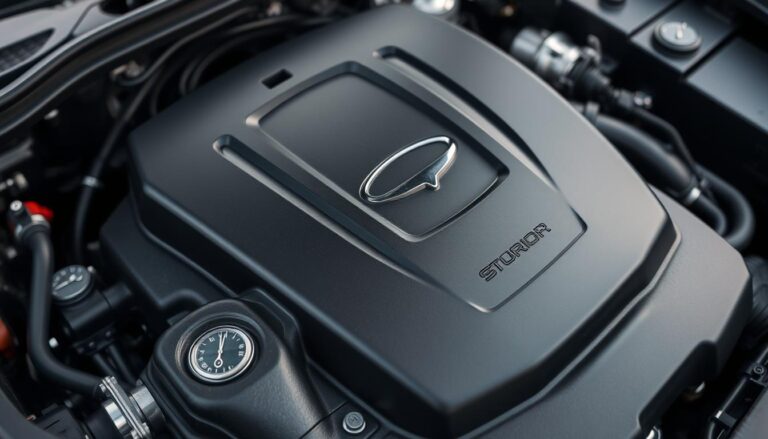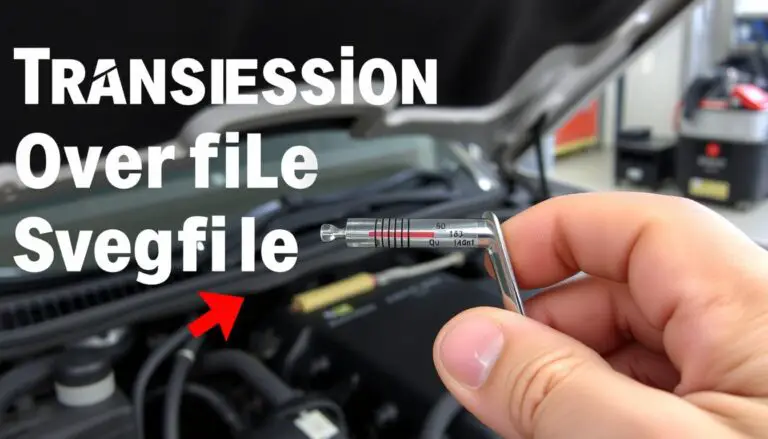Terminal blocks play a crucial role in electrical systems, providing a secure and efficient way to connect and manage electrical connections.
In industrial automation, terminal blocks are used to distribute power and signals throughout a system, ensuring reliable operation and simplifying maintenance.
The purpose of this guide is to provide an in-depth understanding of terminal blocks, their importance, and their applications in various industries.
Key Takeaways
- Understanding the purpose and uses of terminal blocks in electrical systems.
- The importance of terminal blocks in industrial automation.
- The role of terminal blocks in ensuring reliable operation and simplifying maintenance.
- The various applications of terminal blocks in different industries.
- The benefits of using terminal blocks in electrical connections.
What Are Terminal Blocks and Why Are They Important?
Terminal blocks are a crucial component in electrical systems, serving as a secure and efficient means of connecting wires. They are designed to simplify the process of managing electrical connections, making them an indispensable tool in various industries.
Definition and Basic Components
Terminal blocks, also known as terminal strips or connection terminals, are modular blocks used to connect and secure wires. They consist of a conductive material, usually metal, enclosed in a plastic or insulating housing. The basic components include the clamping mechanism, which secures the wire, and the conductive path, which allows the electrical current to flow.
The Critical Role in Electrical Systems
Terminal blocks play a vital role in electrical systems by providing a safe, organized, and efficient way to manage wires. They help in reducing clutter, improving safety, and simplifying maintenance. By using terminal blocks, electricians can easily identify and access specific wires, making it easier to diagnose and repair issues.
A comparison of different types of terminal blocks based on their characteristics is provided below:
| Type of Terminal Block | Clamping Mechanism | Application |
|---|---|---|
| Screw Terminal Blocks | Screw-based | General-purpose wiring |
| Spring Clamp Terminal Blocks | Spring-loaded | High-vibration environments |
| Barrier Terminal Blocks | Screw-based | High-voltage applications |
The design of terminal blocks allows for flexibility and customization. They are available in various sizes, configurations, and materials, catering to different application requirements. The choice of terminal block depends on factors such as the type of wire, the environment in which they will be used, and the specific electrical requirements.
A Full Guide To Terminal Blocks: What They Are, Types and Working
The functionality of terminal blocks is multifaceted, making them an indispensable element in industrial automation and electrical infrastructure. Terminal blocks are designed to simplify the process of making electrical connections, thereby enhancing the overall safety and reliability of electrical systems.
How Terminal Blocks Function
Terminal blocks function by providing a secure and efficient means of connecting and disconnecting wires. They typically consist of a clamping mechanism that holds the wire in place, ensuring a reliable electrical connection. The clamping mechanism can vary, with common types including screw-clamp, spring-clamp, and insulation displacement.
Reliable electrical connections are crucial in industrial settings, where safety and efficiency are paramount. Terminal blocks facilitate these connections by offering a modular and flexible solution that can be easily adapted to various applications.
Key Design Features
The design of terminal blocks incorporates several key features that enhance their functionality and safety. These include:
- High-quality materials that ensure durability and resistance to environmental factors.
- Modular design that allows for flexibility and ease of installation.
- Safety features such as protective covers and insulation to prevent electrical shock.
According to industry experts, “The design of terminal blocks has evolved significantly, incorporating advanced materials and technologies to meet the demands of modern electrical systems.”
“The evolution of terminal block design has been driven by the need for greater reliability, safety, and efficiency in electrical connections.”
Standards and Certifications
Terminal blocks must adhere to various standards and certifications to ensure their safety and compliance with regulatory requirements. Some of the key standards include:
| Standard | Description |
|---|---|
| UL (Underwriters Laboratories) | Certifies products for safety and compliance with North American standards. |
| IEC (International Electrotechnical Commission) | Sets global standards for electrical devices, including terminal blocks. |
| CE (Conformité Européene) | Marks compliance with EU health, safety, and environmental regulations. |
Compliance with these standards is crucial for ensuring the safety and reliability of terminal blocks in various applications, from industrial automation to building and construction.
Common Types of Terminal Blocks and Their Applications
In the realm of electrical connections, terminal blocks play a pivotal role, and their varied types serve distinct applications. The diversity in terminal block designs caters to different industrial needs, ensuring efficient and safe electrical connections.
Screw Terminal Blocks
Screw terminal blocks are one of the most commonly used types, known for their simplicity and reliability. They utilize a screw mechanism to secure wires, making them suitable for a wide range of applications, from industrial automation to building wiring.
Key benefits of screw terminal blocks include their ease of use and the ability to handle larger wire gauges. However, they require regular maintenance to ensure the screws remain tight, securing the wire connections.
Spring Clamp Terminal Blocks
Spring clamp terminal blocks offer a maintenance-free alternative, using a spring-loaded mechanism to clamp wires in place. This design minimizes the risk of loose connections over time, making them ideal for applications where reliability is critical.
These terminal blocks are particularly useful in environments where vibrations could cause traditional screw terminals to loosen. Their ease of use and reliability make them a popular choice in various industries.
Barrier Terminal Blocks
Barrier terminal blocks are designed with safety in mind, featuring barriers that separate connections to prevent electrical shorts. They are often used in applications where safety and isolation are paramount.
The robust design of barrier terminal blocks makes them suitable for harsh environments. They are commonly used in industrial settings where the risk of electrical shock or short circuits needs to be minimized.
DIN Rail Terminal Blocks
DIN rail terminal blocks are mounted on DIN rails, a standardized mounting system widely used in industrial control panels. These terminal blocks are versatile and can be easily installed or removed from the rail, making them highly adaptable to different applications.

Recent Innovations in Terminal Block Design
The evolution of terminal block technology has led to innovations such as modular designs and smart terminal blocks integrated with IoT capabilities. These advancements are transforming the way electrical connections are managed, offering enhanced functionality and monitoring capabilities.
Smart terminal blocks represent a significant leap forward, enabling real-time monitoring and diagnostics. This innovation is particularly relevant in the context of industrial automation and smart manufacturing.
Terminal Block Selection Criteria for Different Industries
The choice of terminal blocks significantly impacts the performance and safety of electrical systems in diverse industrial applications. Different industries have unique requirements based on factors such as environmental conditions, electrical load, and connectivity needs.
Industrial Automation Requirements
In industrial automation, terminal blocks must withstand harsh environments, including high temperatures, vibrations, and exposure to chemicals. Reliable and robust terminal blocks are essential for maintaining continuous operation and minimizing downtime.
Key considerations include:
- High-current capacity
- Resistance to environmental factors
- Compatibility with automation protocols

Building and Construction Applications
In building and construction, terminal blocks are used for lighting, heating, and power distribution systems. The selection criteria here focus on safety, ease of installation, and compliance with building codes.
| Application | Key Requirements |
|---|---|
| Lighting Systems | Safety certifications, ease of installation |
| Power Distribution | High-current capacity, durability |
Transportation and Automotive Considerations
The transportation and automotive sectors require terminal blocks that can endure extreme conditions, including temperature fluctuations and mechanical stress. Compact and vibration-resistant designs are particularly valued in these industries.
Recent Case Studies and Applications
Recent advancements in terminal block technology have led to innovative applications across various industries. For instance, the integration of smart technologies into terminal blocks has enhanced monitoring and control capabilities in industrial automation.
A case study on a leading automotive manufacturer revealed that adopting specialized terminal blocks improved the reliability of their electrical systems and reduced maintenance costs.
Market Trends and Technological Advancements
Technological advancements are redefining the terminal block market, driven by IoT integration and sustainability. The industry is witnessing a significant shift towards intelligent and connected systems, particularly in industrial automation.
Smart Terminal Blocks and IoT Integration
The emergence of smart terminal blocks is a notable trend, enabling real-time monitoring and control in industrial settings. These intelligent devices are designed to integrate seamlessly with IoT systems, enhancing operational efficiency and reducing downtime.
IoT integration with terminal blocks allows for advanced data analytics, predictive maintenance, and improved decision-making. This connectivity is crucial for industries adopting Industry 4.0 practices, where connectivity and data-driven insights are paramount.
Sustainability and Environmental Considerations
Sustainability is becoming a key consideration in the design and manufacture of terminal blocks. Manufacturers are focusing on eco-friendly materials and production processes that minimize environmental impact. This shift is driven by both regulatory requirements and consumer demand for greener products.
The use of recyclable materials and energy-efficient manufacturing processes is on the rise. Companies are also exploring ways to reduce waste and improve the recyclability of terminal blocks at the end of their lifecycle.
Industry Growth and Market Forecasts
The terminal block market is poised for significant growth, driven by increasing demand from industrial automation and renewable energy sectors. Market forecasts indicate a steady rise in the adoption of advanced terminal block solutions, particularly those with IoT capabilities.
Regional growth patterns show a strong uptake in Asia-Pacific and North America, driven by industrialization and infrastructure development. The market is expected to benefit from technological advancements and the expansion of smart grid initiatives.
Conclusion
Terminal blocks play a vital role in electrical connections, serving as a crucial component in various industries. Their ability to provide secure, reliable, and efficient connections makes them indispensable in industrial automation, building and construction, transportation, and automotive applications.
Understanding the different types of terminal blocks, their design features, and selection criteria is essential for professionals working with electrical systems. By choosing the right terminal block for a specific application, individuals can ensure the overall safety and performance of the electrical connection.
As the demand for efficient and reliable electrical connections continues to grow, the importance of terminal blocks will only continue to increase. Staying informed about the latest developments and advancements in terminal block technology will be crucial for industries to remain competitive and meet the evolving needs of their customers.
FAQ
What is a terminal block?
A terminal block is a modular, insulated block that secures two or more wires together, providing a safe and efficient electrical connection.
What are the different types of terminal blocks?
The most common types of terminal blocks are screw terminal blocks, spring clamp terminal blocks, barrier terminal blocks, and DIN rail terminal blocks, each with its own unique characteristics and applications.
How do I select the right terminal block for my application?
To select the right terminal block, consider factors such as the type of electrical connection, wire size, and environmental conditions, as well as industry-specific requirements and certifications.
What are the benefits of using terminal blocks in industrial automation?
Terminal blocks provide a reliable and efficient way to manage electrical connections in industrial automation, reducing downtime and increasing productivity, while also ensuring compliance with industry standards and regulations.
Can terminal blocks be used in harsh environments?
Yes, certain types of terminal blocks, such as those with IP67 or higher ratings, are designed to withstand harsh environments, including extreme temperatures, moisture, and vibration.
How do smart terminal blocks integrate with IoT systems?
Smart terminal blocks can integrate with IoT systems through various communication protocols, such as Modbus or PROFINET, enabling real-time monitoring and control of electrical connections.
What are the key considerations for terminal block installation?
Proper installation of terminal blocks requires careful consideration of factors such as wire stripping, crimping, and tightening, as well as ensuring compliance with relevant safety standards and regulations.
Are there any industry-specific standards for terminal blocks?
Yes, terminal blocks must comply with various industry-specific standards, such as UL, CSA, or IEC, depending on the application and region.


